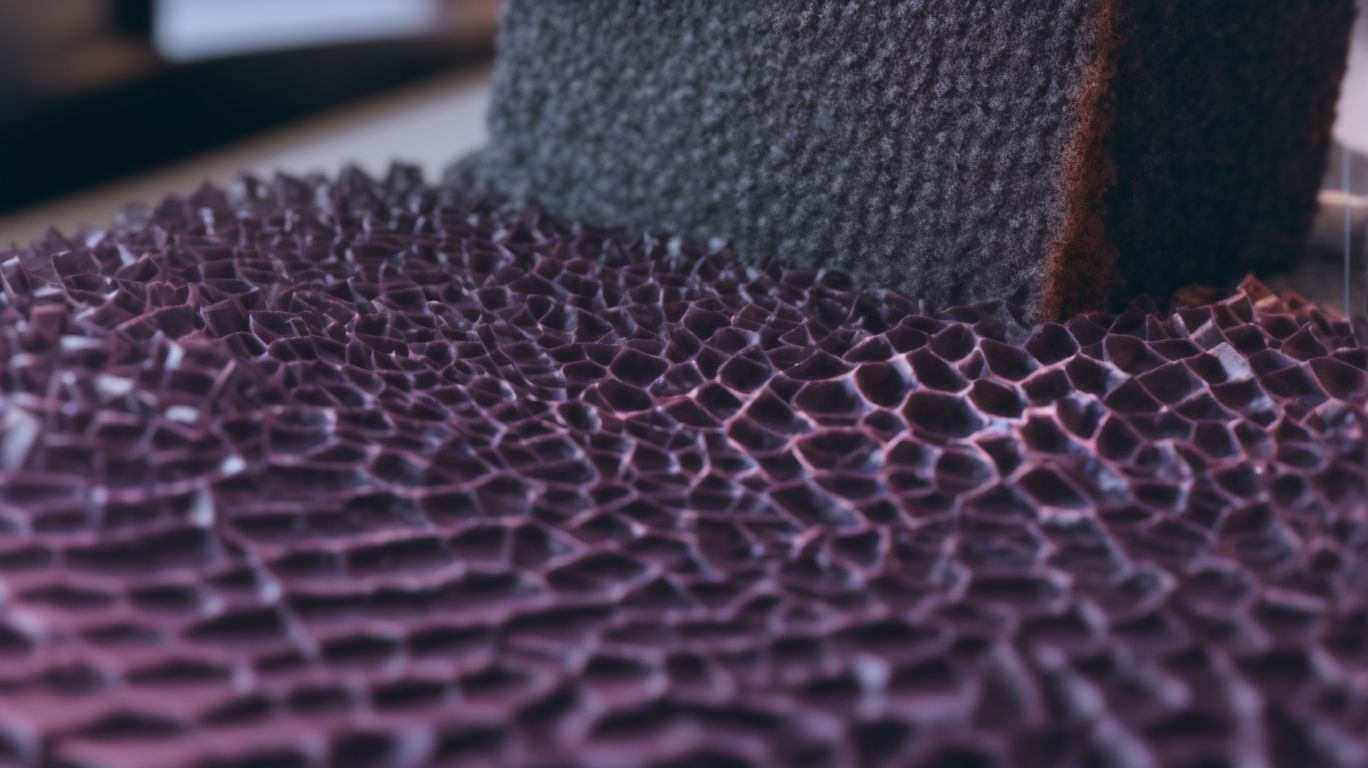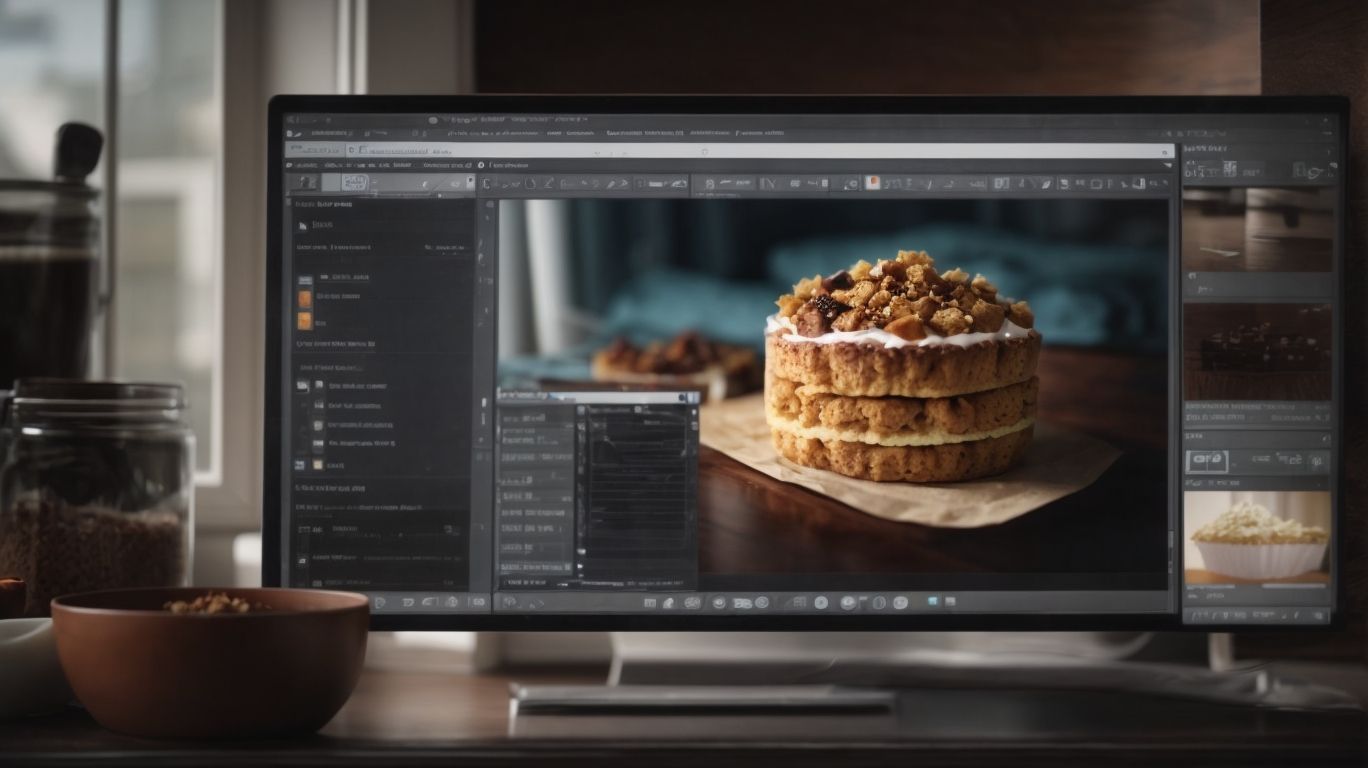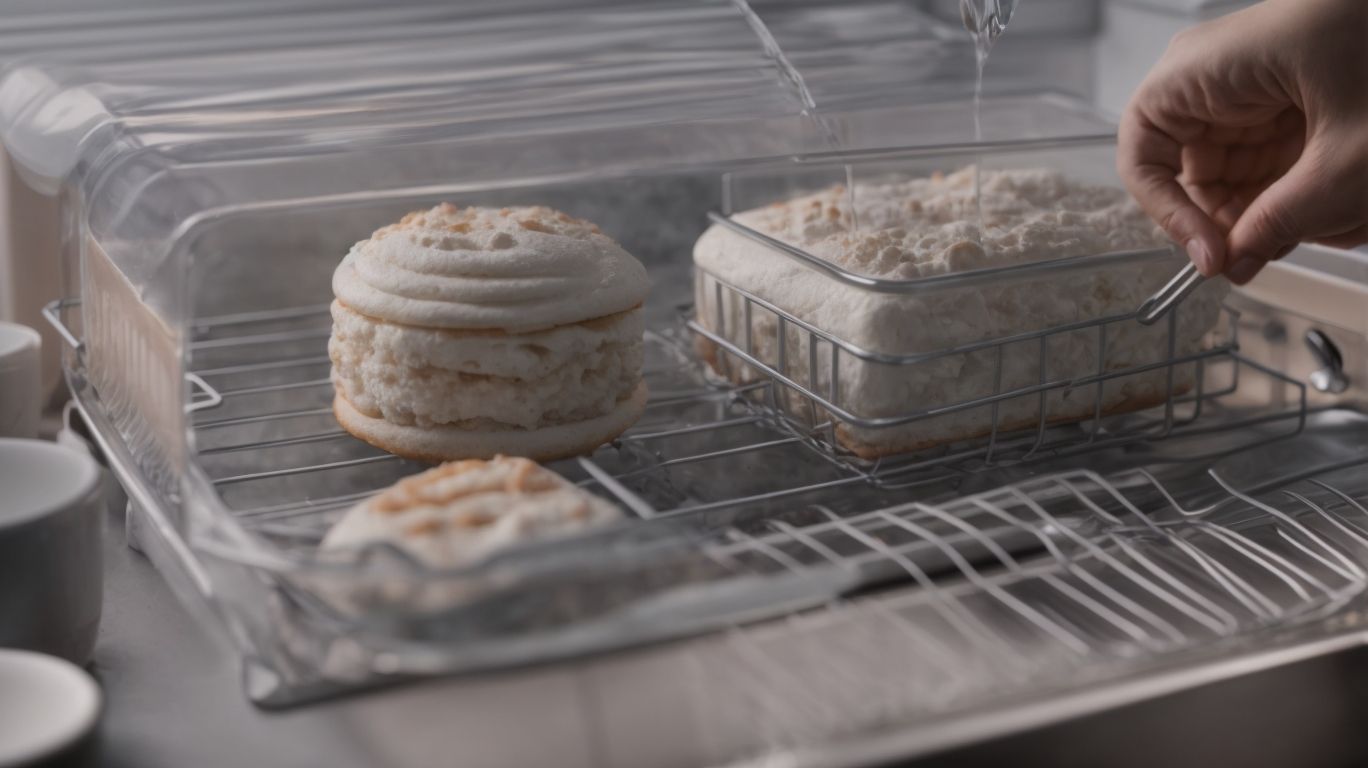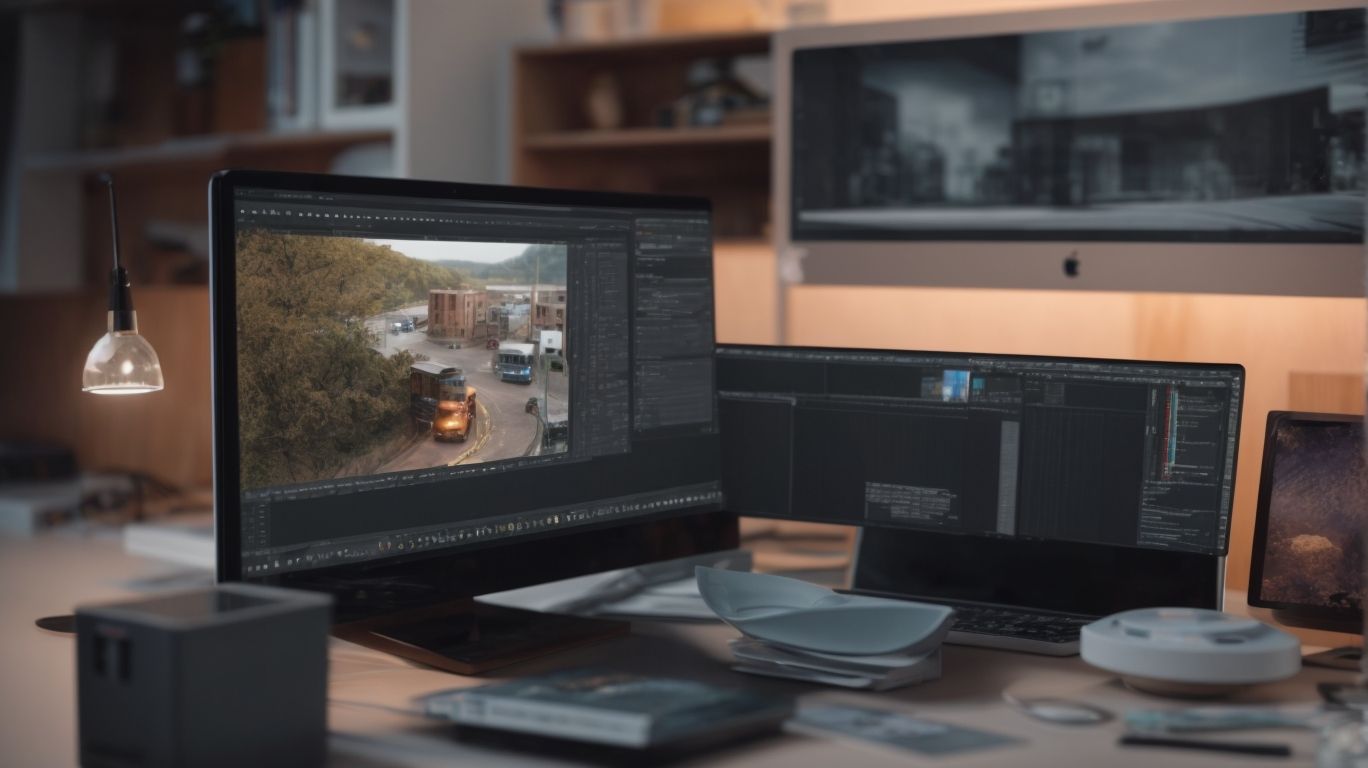How to Bake Normal Map in Blender?
Have you ever wondered what a normal map is and why it is important in 3D modeling?
This article explores normal maps, from understanding how they work to preparing your 3D model for baking. We guide you through creating high-poly and low-poly versions of your model, unwrapping its UVs, setting up the baking process in Blender, adjusting bake settings for best results, troubleshooting common baking issues, and applying your normal map.
Stay tuned for valuable tips and tricks to help you master the art of baking normal maps in Blender.
Key Takeaways:
What is a Normal Map and Why is it Important?

Credits: Poormet.Com – Stephen Allen
Understanding the significance of a normal map in 3D modeling is crucial for achieving realistic textures and details in your renderings.
Normal maps play a key role in increasing the visual fidelity of 3D models by simulating intricate surface details without the need for additional geometry.
By altering how light interacts with the surface, normal maps create the illusion of bumps, scratches, and other fine details that enhance the overall appearance of the object.
These maps contain information about the direction each pixel’s normal is facing, which helps in creating more realistic lighting effects.
In industries such as gaming, animation, and architectural visualization, normal maps are extensively used to optimize performance while maintaining high-quality visuals.
Understanding Normal Maps in 3D Modeling
In the realm of 3D modeling, understanding normal maps is essential for manipulating lighting effects and surface details on objects within a scene.
Normal maps play a crucial role in simulating complex surface textures without adding extra geometry, providing a cost-effective method for improving visual quality. The generation process involves capturing intricate surface details from high-polygon models and transferring them onto lower-polygon counterparts through specialized software algorithms.
By encoding surface normals in RGB color values, normal maps dictate how light interacts with a 3D model, influencing the shading and perception of depth. As light rays hit the surface, the normal map guides the direction in which they reflect, creating the illusion of intricate surface irregularities.
Preparing Your 3D Model for Baking
Before diving into the baking process, preparing your 3D model involves creating both low-resolution and high-resolution versions to facilitate texture transfer and accurate rendering.
It’s crucial to optimize the mesh resolution of your 3D model. This entails simplifying the geometry without compromising the overall shape and details. A balanced mesh resolution streamlines the baking process and enhances the final output quality.
Next, setting up UV maps is essential. These maps dictate how textures are applied to the model’s surface, ensuring precise alignment and minimizing distortions.
To generate high-quality renders, the model’s UV islands should be efficiently laid out with minimal stretching and overlapping. Having contrasting resolution models – low for baking and high for display – is key. The high-resolution model captures intricate details, while the low-resolution version forms the foundation for texture baking, resulting in realistic and visually appealing renders.
Creating a High-Poly Version of Your Model
Crafting a high-poly version of the model involves intricate sculpting techniques and meticulous retopologizing to ensure detailed geometry for texture baking.
Sculpting methods such as dynamic topology or multi-resolution sculpting are commonly used to add complex details like wrinkles, pores, or surface imperfections, enriching the overall appearance of the model. In terms of retopology, the focus is on creating a clean, optimized mesh structure that maintains the high-detail sculpt while being suitable for animation and rendering.
- Considerations for edge flow and polygon density are crucial in this phase.
- Creating UV maps for the high-poly model ensures that intricate details are accurately transferred onto the final textured version.
These processes are fundamental for generating high-quality texture maps, resulting in more realistic and visually appealing renders.
Creating a Low-Poly Version of Your Model
Developing a low-poly version of the model streamlines the baking process by optimizing geometry and simplifying the mesh structure for efficient texture transfer and rendering.
Creating a low-poly model is crucial for enhancing workflow efficiency, as it reduces the complexity of the model without compromising the overall visual appeal. By employing modifiers such as the multiresolution modifier in software like Blender, users can easily adjust the level of detail to achieve the desired balance between performance and quality.
The use of low-resolution models significantly impacts rendering performance by lessening the computational burden on hardware, resulting in faster processing times and smoother visualization. This optimization not only accelerates the rendering process but also ensures that resources are utilized effectively, making it ideal for projects with strict performance requirements.
Unwrapping Your Model’s UVs
Unwrapping the UVs of your model is a critical step in texture baking, as it defines how textures are applied and mapped onto the 3D surface.
UV unwrapping essentially involves flattening the 3D model onto a 2D plane, allowing digital artists to paint textures accurately on its surface. By creating a UV map, which resembles a flattened version of the object, artists can ensure that textures wrap seamlessly around the model, enhancing its realism.
Proper UV mapping techniques, such as planar, cylindrical, or spherical mapping, play a vital role in optimizing texture alignment and quality. Image textures can be applied to UV maps to add colors, patterns, and details, enhancing the visual appeal of the model.
Optimizing UV layouts involves minimizing distortion, overlapping UVs, and wasted space, leading to efficient texture transfer during the rendering process. A well-designed UV layout can significantly impact the final quality of rendered textures, making UV unwrapping a crucial aspect of 3D modeling workflows.
Setting Up the Baking Process in Blender

Credits: Poormet.Com – Kyle Sanchez
Configuring the baking process in Blender involves utilizing its node-based material system, adjusting render properties, and fine-tuning shaders in the Shader Editor for optimal texture results.
Baking textures in Blender is a crucial aspect of creating realistic 3D models. The node-based material system provides a versatile platform for creating intricate material setups. By adjusting the render properties, you can control the final output’s quality, including resolution and sampling settings. The Shader Editor allows you to refine shaders to enhance the visual appeal of your textures, offering detailed customization options for achieving your desired texture outcomes.
Creating a New Image for the Normal Map
Generating a new image texture specifically for the normal map is essential to ensure accurate representation of surface details and lighting information during the baking process.
When creating a dedicated image texture for the normal map, it’s crucial to consider factors such as resolution, color depth, and compression settings to achieve the best results. Utilizing normal map nodes in software like Blender or Substance Painter allows for precise control over the mapping of surface details, enhancing the realism of the final output.
Proper material assignments play a significant role in ensuring that the normal map interacts seamlessly with the 3D model. By correctly assigning the normal map to specific parts of the model based on surface angles and orientations, you can create more accurate lighting effects and enhance the overall visual appeal.
Workflow considerations are also vital for the successful integration of the normal map with the 3D model. Establishing a streamlined workflow that includes consistent naming conventions, organized file structures, and version control practices helps maintain efficiency and avoids potential errors during the texturing process.
Adding a Material to Your Low-Poly Model
Applying a suitable material to the low-poly model involves utilizing shading techniques like Shade Smooth and incorporating Swizzle functionalities to enhance texture quality and rendering fidelity.
When selecting materials for your low-poly models in Blender, it’s crucial to consider their properties such as roughness, metallicness, and transparency to achieve realistic results. Adjusting the roughness can make the surface appear smoother or rougher, giving the object a more defined texture.
Exploring the metallicness property can simulate how light interacts with metallic surfaces, providing depth and sheen to your model. Incorporating transparency allows you to create see-through or semi-opaque elements within the scene, adding complexity and visual interest.
Creating a New Bake Map in Blender
Generating a new bake map in Blender involves adjusting ray distances, applying smoothing techniques, and optimizing material properties to facilitate accurate texture transfer for the normal map.
In terms of adjusting ray distances during the bake map creation process, finer adjustments can ensure a more detailed and precise texture capture, especially for complex surfaces. This step is crucial in capturing intricate details and avoiding pixelation or blurriness in the final output.
Implementing smoothing methods is equally important to reduce artifacts such as jagged edges or unwanted noise that may appear during baking. By applying appropriate smoothing algorithms, the final normal map can have a cleaner appearance, resulting in a more realistic and polished texture.
Fine-tuning material properties plays a significant role in enhancing texture quality during the baking process. Understanding how different material settings affect the final outcome allows for adjustments that can improve the overall look and feel of the texture applied to the 3D model.
Baking Your Normal Map
Baking your normal map involves fine-tuning bake settings to achieve optimal results and troubleshooting common issues that may arise during the process.
When adjusting the bake settings in Blender, it’s crucial to pay attention to factors like ray distance, margin, and anti-aliasing to ensure the accuracy and quality of your normal map. Understanding how these settings interact with each other can significantly impact the final outcome.
It’s advisable to check for issues such as distortion, smoothing errors, or artifacts that may occur during the baking process. This can be resolved by adjusting the cage, smoothing groups, or recalculating normals before baking.
One helpful technique is to split your mesh into high and low-resolution versions, making sure they align properly and using a cage to encapsulate the low-poly model effectively.
Adjusting Bake Settings for Best Results
Fine-tuning bake settings in Blender is crucial for achieving the best results in texture transfer, rendering accuracy, and material fidelity across the 3D model.
When adjusting the bake settings, one crucial aspect to focus on is render considerations. Ensuring that the baked textures accurately portray the intended visual details can significantly impact the overall quality of the final render. By tweaking parameters such as resolution and margin values, artists can enhance the sharpness and clarity of textures, resulting in a more polished and professional appearance.
Troubleshooting Common Baking Issues
Identifying and resolving common baking issues such as texture distortion, UV mapping errors, and object alignment problems is essential to ensure a successful normal map baking process.
Texture distortion in baked normal maps can often occur due to improper unwrapping of UV maps, causing stretching or overlapping of textures. To address this, ensure that UV islands are correctly laid out and properly scaled. For UV mapping errors, double-check the seams and overlapping areas in your UV layout. If experiencing object alignment issues, verify that all objects have their origin points centered and aligned correctly before baking. Utilizing cage objects can also help in maintaining proper spacing between objects during the baking process.
Applying Your Normal Map to Your Model
Applying the normal map to your 3D model involves integrating the texture data into the material properties, adjusting shading parameters, and fine-tuning the rendering settings for a realistic visual impact.
Normal maps play a crucial role in enhancing the visual fidelity of a 3D scene by providing the illusion of high-resolution details on low-polygon models. When applied correctly, they can significantly improve the realism of surfaces without the need for additional geometry.
In Blender, the process begins by selecting the object you want to apply the normal map to and navigating to the materials tab. Here, you can add a new texture slot and choose the normal map image file. It is essential to ensure that the mapping coordinates align properly with the model’s UV layout to achieve accurate texture placement.
Conclusion and Additional Tips for Baking Normal Maps in Blender

Credits: Poormet.Com – Gregory Martin
Mastering the art of baking normal maps in Blender requires a blend of technical proficiency, artistic vision, and meticulous attention to detail for achieving stunning texture results.
One key workflow efficiency tip for successful normal map baking in Blender is to ensure that your high-resolution and low-resolution meshes are properly aligned and have clean topology to avoid errors and artifacts.”
In terms of sculpting, sculpting techniques like adding fine details, sharp edges, and surface imperfections can greatly enhance the quality of your normal maps, providing depth and realism to your textures.
It’s important to consider rendering considerations such as proper UV unwrapping, checking for distortions, and using suitable baking settings to optimize the final output and ensure your textures look flawless in different lighting conditions.
Frequently Asked Questions
1. How to Bake Normal Map in Blender?
Baking a normal map in Blender is a great way to add texture and detail to your 3D models. Here’s how to do it in a few simple steps:
2. What is a normal map and why should I use it in Blender?
A normal map is a type of texture that simulates the appearance of bumps, scratches, and other surface details on a 3D model. Using a normal map in Blender can add more visual complexity and realism to your models without having to create them from scratch.
3. How do I prepare my model for baking a normal map in Blender?
Before baking a normal map, it’s important to make sure your model is properly unwrapped and has a high enough resolution to capture the details you want to add. You can also add a high-poly version of your model to capture even more intricate details in the normal map.
4. Can I bake a normal map from a high-poly to low-poly model in Blender?
Yes, Blender allows you to bake a normal map from a high-poly model to a low-poly one. This is useful if you want to use a detailed model in your game or animation without sacrificing performance.
5. Are there any tips for improving the quality of a baked normal map in Blender?
One tip is to make sure your models have enough space between them when baking, as overlapping or intersecting geometry can result in distortions in the normal map. You can also experiment with different baking settings and smoothing techniques to achieve the desired outcome.
6. What are some common mistakes to avoid when baking a normal map in Blender?
A common mistake is forgetting to check the “Selected to Active” box when selecting the high-poly and low-poly models. This ensures that the normal map is baked from the high-poly to the low-poly model. It’s also important to double-check the UV layout and make sure there are no overlapping or mirrored faces before baking.

